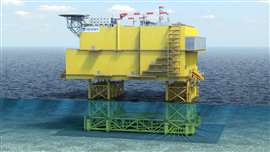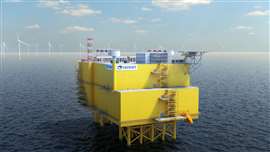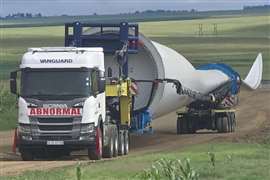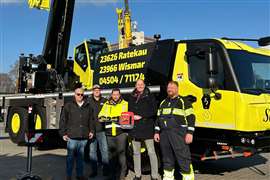Read this article in French German Italian Portuguese Spanish
Mammoet wins topsides shift and lift contract
07 July 2025
 Signing the contract between Mammoet and Heerema Marine Contractors. From left: Robert Sloos, HMC chief financial officer; Martijn Wijdeveld, HMC supply chain director; Jan Kleijn, Mammoet chief operating officer; and Richard Verhoeff, Mammoet sales director. Photo: Mammoet
Signing the contract between Mammoet and Heerema Marine Contractors. From left: Robert Sloos, HMC chief financial officer; Martijn Wijdeveld, HMC supply chain director; Jan Kleijn, Mammoet chief operating officer; and Richard Verhoeff, Mammoet sales director. Photo: Mammoet
International heavy lift and transport specialist Mammoet has signed a contract with Heerema Marine Contractors (HMC) to support offshore installation of two giant topsides.
The work will be for the topside float over operations on the TenneT 2GW mega project in Europe’s North Sea. This project is to construct and install 14 high-voltage direct current (HVDC) offshore grid connection systems, each with a transmission capacity of 2 gigawatts. Due for completion by 2032, they will be in the North Sea; seven in Germany and seven in the Netherlands.
First, using hydraulic skidding equipment, Mammoet will skid the topsides on to Heerema’s new H731 barge. Once onboard Mammoet will use its Mega Jack lifting system to get the topsides up to their correct float over height. A deck support in the form of a float over frame will be pulled in underneath to hold it at that height prior to installation on the jacket foundations out at sea.
New deal
 Tennet’s HVDC platforms collect electricity via undersea cables from offshore wind turbines and convert it to DC for onward transmission to shore. Image Tennet
Tennet’s HVDC platforms collect electricity via undersea cables from offshore wind turbines and convert it to DC for onward transmission to shore. Image Tennet
Commenting on this latest Mammoet contract Richard Verhoeff, sales director, said, “With this contract, Mammoet will be playing a key role in securing the future of energy in Northern Europe while showcasing our unique capabilities in both high-precision skidding and jacking operations.
“We are delighted to be working closely with Heerema and thank them for enabling us to play an even greater role in the wider energy transition.”
From Heerema Martijn Wijdeveld, director supply chain management and procurement, said, “Mammoet is a market leader in offshore wind heavy lift and transport, and has proven it has the knowledge, equipment and engineers to manage the world’s biggest projects.
“We look forward to collaborating with them, benefitting from their vast experience of carrying out heavy lifts and transports safely and efficiently.”
HVDC systems collect the electricity generated by wind farms at sea and then convert it from AC to DC to help increase transmission capacity using fewer cables. When the electricity arrives on land it is then converted back to AC for onward transmission.
 Working for Heerema Marine Contractors, Mammoet will help to load out and install these giant Tennet HVDC platforms offshore. Image: Tennet
Working for Heerema Marine Contractors, Mammoet will help to load out and install these giant Tennet HVDC platforms offshore. Image: Tennet
STAY CONNECTED


Receive the information you need when you need it through our world-leading magazines, newsletters and daily briefings.
CONNECT WITH THE TEAM












